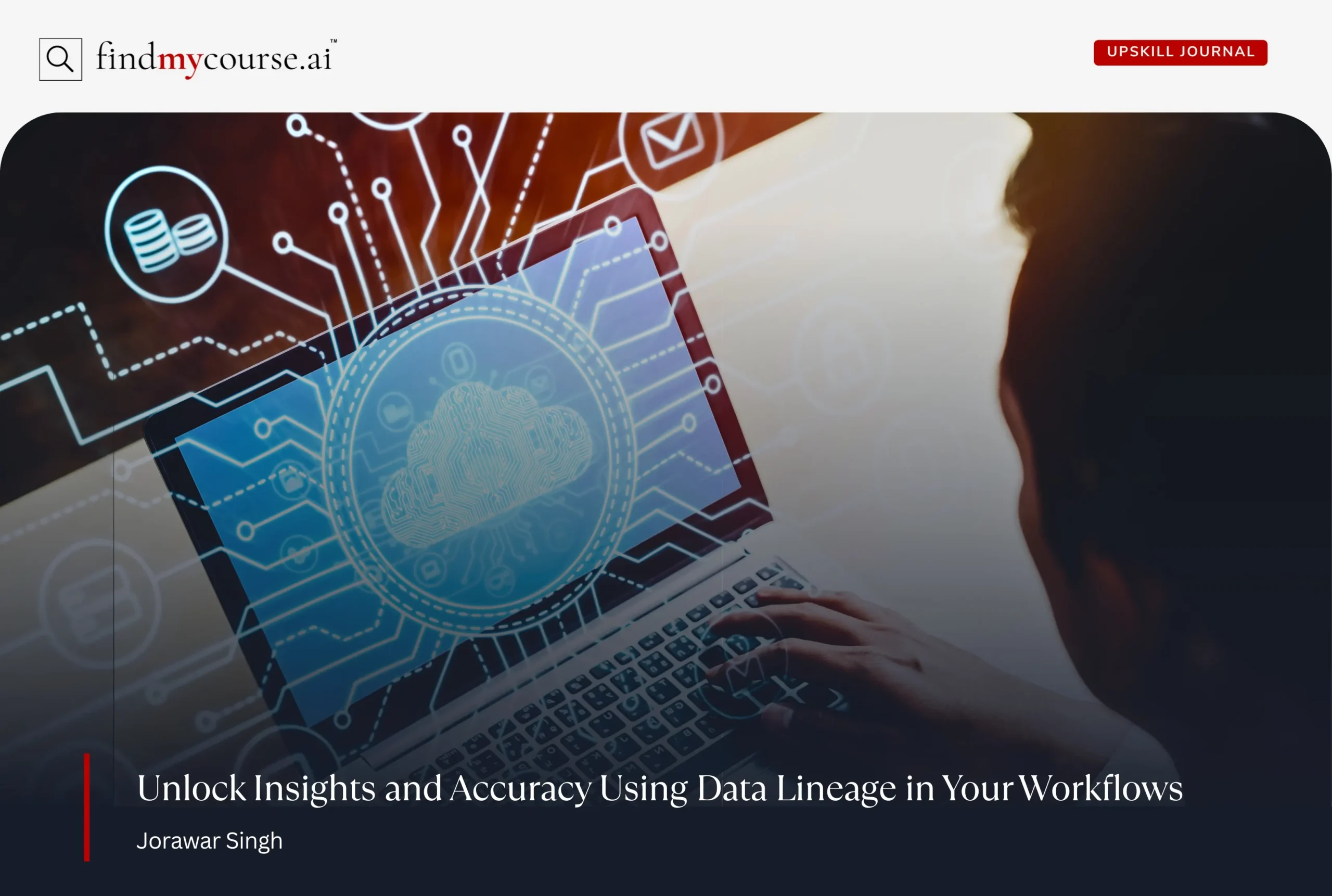In today’s data-driven world, the difference between reacting late and staying ahead often comes down to foresight. Businesses that can anticipate demand, market shifts, or resource needs hold the competitive edge—and that power comes from time series forecasting. Moreover, the real challenge is choosing the right techniques. From tried-and-true statistical models to cutting-edge deep learning, forecasting offers a toolbox of approaches that can make or break your predictions. For professionals, mastering these methods isn’t just about analysis—it’s about upskilling for future-ready careers. This guide will walk you through the most essential time series forecasting techniques you should know, explained in a simple, approachable way.
What is Time Series Forecasting?
At its core, time series forecasting is the practice of using historical data points—collected at regular intervals over time—to predict future values. Imagine having daily records of stock prices, monthly sales numbers, or yearly climate data. The goal is to uncover patterns, seasonality, and trends that can help anticipate what happens next.
Unlike basic predictive analytics, which often treats data as independent points, forecasting looks at how values evolve over time. This makes it especially powerful for industries where timing and sequence matter. Whether you’re a data enthusiast or a business leader, learning how forecasting works can open doors to smarter strategies and stronger career opportunities.
Importance of Time Series Forecasting in 2025
The demand for professionals who understand time series forecasting is growing fast. From AI-driven personalization in retail to demand planning in energy sectors, forecasting empowers companies to reduce risk, improve customer experiences, and gain competitive advantage.
Moreover, as artificial intelligence tools become more accessible, companies need experts who can apply forecasting responsibly and explain insights clearly. Consequently, those who invest in learning these techniques now will stand out in tomorrow’s job market.
Classical Time Series Forecasting Techniques
Before diving into advanced AI-based methods, it’s important to understand classical approaches. These models remain widely used because of their simplicity, interpretability, and effectiveness in many real-world scenarios.
Moving Average (MA) and Exponential Smoothing
A simple starting point, moving average smooths out short-term fluctuations by averaging values across a fixed window. Exponential smoothing goes a step further by giving recent data more weight, making it more responsive to changes. These methods are widely applied in inventory management and short-term sales predictions.
Autoregressive Integrated Moving Average (ARIMA)
ARIMA is one of the most well-known time series forecasting models. It combines autoregression (where past values predict future ones), differencing (to handle trends), and moving averages. ARIMA shines in data that shows clear linear patterns but requires careful tuning of parameters.
Seasonal ARIMA (SARIMA)
When data has strong seasonal behavior—like retail sales peaking during holidays—SARIMA adds seasonal components to the ARIMA framework. It’s a go-to technique for industries with recurring cycles.
These classical models remain highly relevant, especially when interpretability and computational efficiency are priorities.
Advanced Time Series Forecasting Models with Machine Learning
As data grows in complexity, machine learning models are gaining traction. Unlike traditional methods, they can capture nonlinear relationships and handle large-scale datasets.
Random Forests and Gradient Boosting
While primarily used for general regression tasks, tree-based methods like Random Forest and XGBoost can be adapted for forecasting. By engineering lag features (previous values as predictors), these models capture complex dependencies that classical models may miss.
Support Vector Regression (SVR)
SVR handles nonlinear trends well by using kernels to transform data into higher dimensions. Though more computationally intensive, it’s effective when data patterns are not straightforward.
These models act as a bridge between classical statistical methods and deep learning approaches, offering flexibility and stronger predictive power in diverse industries.
Deep Learning Time Series Forecasting Techniques
In recent years, deep learning has revolutionized forecasting. Neural networks, inspired by the human brain, excel at recognizing intricate temporal patterns.
Recurrent Neural Networks (RNNs) and LSTMs
RNNs are specifically designed for sequential data, making them natural fits for forecasting. Long Short-Term Memory networks (LSTMs), a type of RNN, overcome limitations like vanishing gradients, enabling them to remember long-term dependencies. They are widely used in finance, natural language processing, and healthcare.
Gated Recurrent Units (GRUs)
GRUs are a streamlined version of LSTMs. They require fewer parameters but deliver similar performance, making them more efficient for large datasets without sacrificing accuracy.
Transformers for Forecasting
Originally developed for natural language processing, transformer models have recently entered the forecasting space. Their ability to handle long sequences and parallel processing makes them powerful tools for big data applications, from energy load prediction to climate modeling.
As organizations embrace AI-driven solutions, these deep learning methods are becoming increasingly critical.
Choosing the Right Forecasting Technique
With so many options, how do you choose the right method? It depends on your goals, data characteristics, and resources.
- If your dataset is small and relatively stable, classical methods like ARIMA or exponential smoothing may suffice.
- For medium complexity, machine learning models provide flexibility and accuracy.
- When working with vast or highly nonlinear data, deep learning approaches such as LSTMs or transformers are best.
Ultimately, the art of forecasting lies in balancing accuracy with interpretability. Many professionals use hybrid approaches, combining classical and machine learning models to get the best of both worlds.
Getting Started on Your Time Series Forecasting Journey
Mastering time series forecasting techniques doesn’t just make you a better data professional—it makes you future-ready. Online platforms now offer practical courses that combine theory with real-world projects, allowing learners to experiment with different models on real datasets. Here are three highly recommended courses worth exploring:
- Coursera – Practical Time Series Analysis (SUNY): A beginner-friendly introduction to forecasting with AR, MA, and ARIMA models, blending theory and hands-on assignments.
- edX – Time Series Analysis (MITx): A rigorous, university-level program focusing on ARMA, ARIMA, and advanced topics like volatility modeling, best for those seeking academic depth.
- Udemy – Time Series Analysis and Forecasting with Python: A practical, code-driven course that teaches ARIMA, SARIMAX, and LSTMs using Python libraries, ideal for applied learners.
In addition, joining data science communities, reading research papers, and contributing to open-source forecasting libraries can accelerate your learning. Employers are increasingly valuing candidates who not only know how to build models but can also explain their insights clearly and ethically.
Final Thoughts
Time series forecasting is no longer just a technical concept—it’s a business-critical capability. From retail sales to climate insights, the ability to anticipate trends shapes smarter decisions and sharper strategies. Whether you lean on classical models like ARIMA, explore machine learning approaches, or dive into advanced deep learning architectures, what matters is choosing techniques that fit your data and goals. In 2025, organizations value professionals who not only build accurate forecasts but also translate them into meaningful action.
By mastering these time series forecasting techniques, you’re not simply crunching numbers—you’re unlocking foresight. And if you ever need a hand or have questions along the way, our AI assistant is here to guide you.


